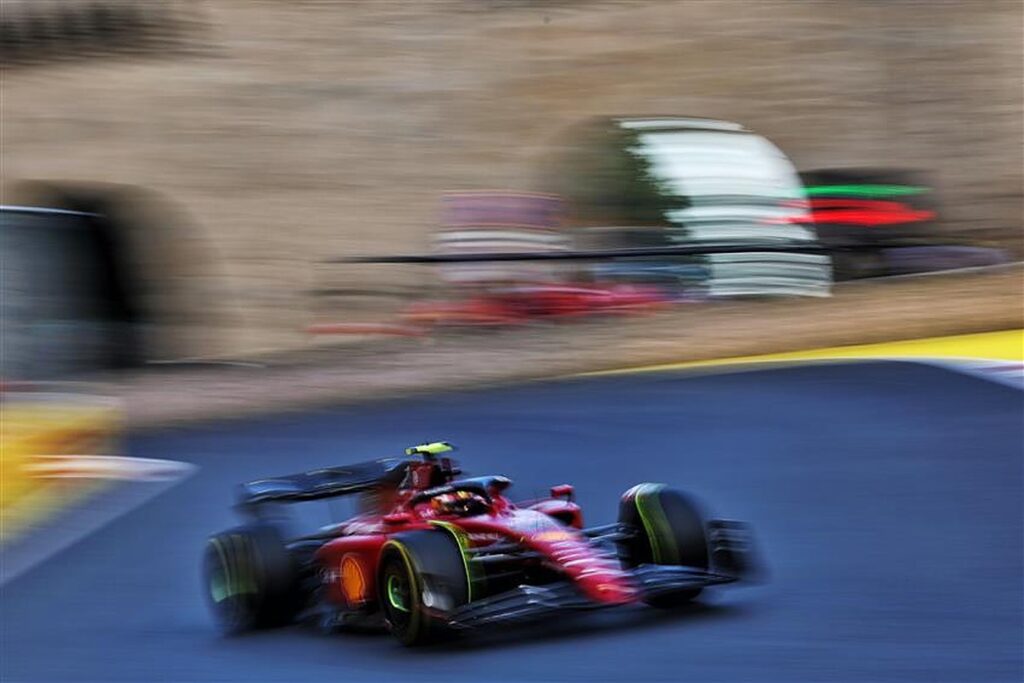Ferrari’s Carlos Sainz has reiterated that “porpoising” is beginning to pose a real threat to the drivers’ help, and has again urged the FIA to make changes to the regulations.
The new technical regulations in Formula 1 saw the return of ground effect aerodynamics and, while it was inevitable that the gaps between the quickest and the slowest was going to be bigger until the cars evolved, it seems to have done the trick in promoting closer and more exciting racing.
However, one thing it also brought in was lower ride heights, and some teams have had more luck than others in ensuring that the abrasion between the floor and the track surface does not affect them.
READ: Binotto admits grave concern over Ferrari engine reliability
While Red Bull’s chassis design and airflow is such that the floor appears to stay rigid with the rest of the chassis, Mercedes in particular have struggled to get to grips with how to set up the car aerodynamically in such a way to keep the floor still.
As a result, the floor tends to flex quite a lot compared to the Red Bull, and the end result is aggressive, heavy and painful contact with the circuit.
The drivers are essentially sat on the ground as they drive the cars, so those impacts are felt right up through the spine and neck, and the bouncing also means that the head moves around a substantial amount, leading a to a risk of concussion.
The Silver Arrows’ pace has also been affected due to the time they lose on the straights, but they are not the only ones suffering.
Ferrari too have experienced the issue, but their pace has not been too adversely affected by it – Charles Leclerc has two wins and six pole positions this season, while he and Sainz have stood on the podium eight times between them in the opening eight rounds of 2022.

Interestingly, Leclerc has not really felt the bouncing an awful lot despite its visual presence in his car, but Sainz certainly has, and he and George Russell have been outspoken about the effects it might have physically in the long run.
It did not get any easier to handle it for the Spaniard during last weekend’s grand prix in Baku.
“Friday, I suffered a lot, and for a few reason I had a car or a bottom that caused more porpoising and skidded the car more than the other with the same set-up, and it was, very, very painful,” said Sainz.
“I saw other drivers struggling on the straight, and we got to the point where we looked at each other to say: ‘We have to do something, because we can’t last another 10 years like this.’”
The excessive bouncing and its detrimental impact is something that can be softened by raising the ride height of the car, but what happens if a team raises the ride height to the maximum and still encounters “porpoising?”
This is one of the reasons some drivers are asking the governing body to look at changing the regulations to help the teams manage the bouncing, because the risk, in Sainz’s eyes, will begin to outweigh the rewards.
“We then asked kindly to the FIA to examine the matter and to listen to us drivers , because we are starting to struggle to manage the situation,” he added.
“We need the FIA to react quickly, as it will soon be difficult to manage with the pain.
“Is it necessary for 20 drivers to have back problems after each race, despite all this technology? Is it really worth it? I don’t think so.”
Sainz and Leclerc both retired from the Azerbaijan Grand Prix after suffering reliability failures, leaving Max Verstappen to win ahead of team-mate Sergio Perez.
Perez surpassed Leclerc for second in the Drivers’ Championship as a result, and the Austrian side extended their Constructors’ Championship lead over the Scuderia.

